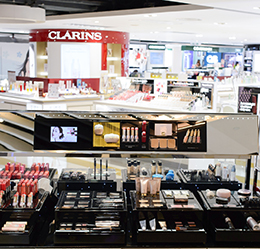The future of malls has been and is still being hotly debated, as anchor stores, which have historically pulled customers into shopping at malls, have slowly but surely been losing traction with consumers. These anchor stores of course are department stores, which is the slowest growing channel in beauty in 2015, according to our Cosmetics & Toiletries USA report. Iconic staple brands, such as Clinique, Estée Lauder, and Lancôme, which typically drew shoppers to department store counters, have expanded their distribution to retailers like Ulta and Sephora, which are stores resonating with younger consumers. As some of the largest department stores, such as Macy’s, Sears, and JCPenney, continue to close locations, what remains the more overarching question—how will the locations that remain open increase foot traffic and sales?
Observing successful beauty retailing establishments found in malls can provide an answer. L Brands retailers Victoria’s Secret and Bath & Body Works are examples of two retailers that, year after year, continue to grow sales of fragrances and body care in beauty. The stores are excellent at providing solutions to shoppers looking for gifts at a reasonable price, while constantly innovating with new scents and packaging. It may not be easy for all well-established companies to be at the forefront of innovation, but the companies that can nimbly change course with shifting consumer preferences will continue to grow strongly.
Our recently published Boutique Beauty Retailers: Channel Analysis and Opportunities also finds that stores that are digitally and technology advanced, as well as creating exciting experiences for consumers, are important to driving sales in today’s beauty economy. However, given fast e-commerce options, stepping into a mall may not even cross a consumer’s mind. With this knowledge, it is important for retailers to give consumers a reason to make the trek. Sephora, which is found in malls throughout the country, proves that both in-store technology and a playful environment can drive consumers to malls to shop. Bath & Body Works is another example of a retailer encouraging shoppers to play with products throughout the store, and all locations have sinks to make experimenting easier.
With that said, many of the stores offering unique experiences are those that are brand-specific or beauty boutiques. Since 2015, door counts of beauty boutiques have grown 2%, with boutiques in malls lagging behind the growth of street locations, proving that there are many opportunities for beauty boutiques in malls. The new edition of our Beauty Retailing USA: Channel Analysis and Opportunities report will explore how malls can turn struggling retail spaces into experience centers that will draw consumers to shop, explore, and spend more. Various other purchase channels, such as direct sales, drug outlets, food outlets, mass merchandisers, and specialty stores, will also be analyzed in-depth to reveal the challenges and opportunities in the ever-changing retail landscape specific to beauty and personal care products in the United States.

